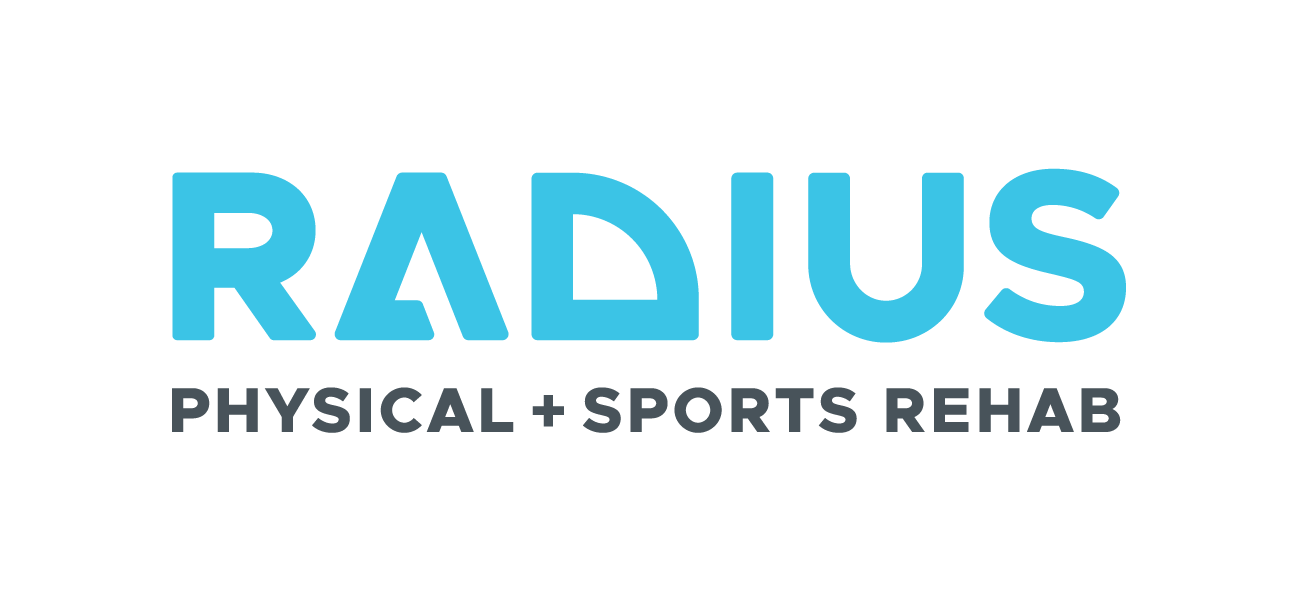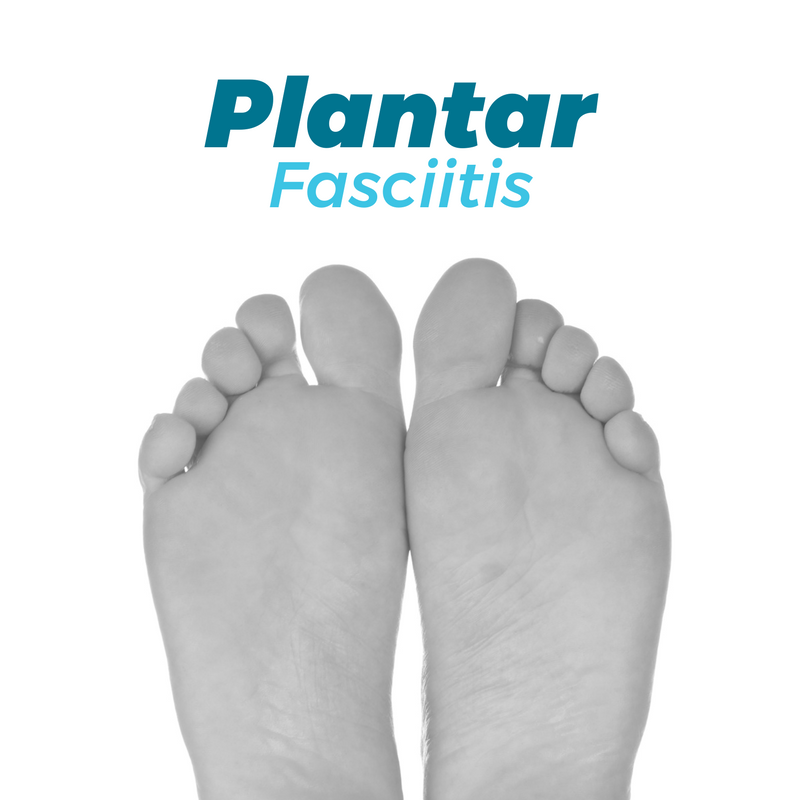Therapy & Treatment for Plantar Fasciitis
What is Plantar Fasciitis/-opathy?
The “-itis” in plantar fasciitis implies that there is inflammation present in the plantar fascia. Researchers and healthcare professionals now believe that there is not an active inflammatory response regarding this injury but instead thickening and degenerative tissue findings of the plantar fascia. The plantar fascia is the connective tissue between the heel of the foot and the toes. Pathology of the fascia produces pain in the heel and foot which tends to occur when standing after a long period of being off of one’s feet (after waking up and getting out of bed in the morning for example) or after standing for long periods of time.
Symptoms
Plantar fasciopathy presents typically as a sharp, stabbing pain in the heel. The pain can also occur along the medial longitudinal arch of the foot which is the arch located along the big toe side of the foot. Pain tends to appear after overuse (exercise, for example), when using the foot following a period of inactivity (taking those first few steps in the morning or after sitting for long periods of time), or when walking on hard surfaces. Pain which is caused by plantar fasciopathy tends to improve some after some walking/movement.
Causes
The plantar fascia is like a ribbon of connective tissue which absorbs the impact of your foot when you walk or run. It is designed to absorb these high stresses however too much pressure and tension can lead to damage of the fascia and result in pain. Most commonly, plantar fasciopathy is brought on due to overuse and repetitive strain which cause micro-tears of the plantar fascia.
Risk Factors
There are many risk factors associated with plantar fasciitis. Here are a few common ones:
Biomechanical dysfunction
Typical biomechanically dysfunctional causes of plantar fasciitis are limited ankle dorsiflexion (decrease in the amount one can bring the top of their foot towards their shin) which can often be due to tightness of the gastrocnemius and soleus muscles as well as the Achilles’ tendon, deformities of the foot (flat feet or high arches), ankle, and/or leg, overpronation (middle of the foot rolls in, flattening the arch), and weak muscles in the foot.
Exercises/Occupation/Use
Athletes use their feet a lot and their feet must be able to withstand the pounding and twisting of constant running and cutting. Many jobs require an individual to stand or walk for long periods and some individuals make lifestyle choices that require them to be on their feet for long periods of time or to walk for long distances. Activities that require significant running or walking or even standing for long periods of time can contribute to the development of plantar fasciitis.
Footwear
Heavily worn footwear, or footwear which is poorly designed for your feet, can lead to an increase in stress and tension in your feet. This can result in damage to the plantar fascia. Also, wearing high-heeled shoes can contribute to the development of plantar fasciopathy.
Age
As we age, our risk of developing plantar fasciitis increases. Plantar fasciitis is most common in adults between the ages of 45-65 and can be related to degenerative changes which may cause a decrease in elasticity and shock-absorbing capabilities of the plantar fascia.
Body Weight
Individuals with an elevated BMI demand their feet absorb higher forces via daily activities. This additional strain increases the probability of developing plantar fasciopathy.
Sex
There seems to be no statistical difference in prevalence between men and women.
Complications
If plantar fasciitis is left untreated, it can eventually lead to chronic heel pain, which will make it difficult for the individual to enjoy regular activities such as walking or exercise. Chronic heel pain can also make an individual want to adjust his or her gait to minimize the pain, which can in turn lead to additional difficulties and compensations up the anatomical chain.
Prevention
There are a number of ways to avoid plantar fasciopathy which includes but is not limited to:
Performing regular foot and calf stretches and strengthening exercises
Choosing shoes with the proper room and support for your foot and avoiding high heeled shoes when possible
Avoiding spending too much time walking or standing on hard surfaces
Choose low-impact sports and exercises (e.g. swimming, cycling)
Being conscious of body weight and the potential effects it may have on your musculoskeletal system
Diagnosis
Diagnosis of plantar fasciitis is done by a qualified healthcare professional who will evaluate your medical history and symptoms. Of note here are the location, quality, timing, and frequency of your foot pain. In some cases, the doctor will recommend an MRI or X-ray to rule out fractures, arthritis, or other troublesome conditions.
Treatment
There are many non-invasive methods for treating plantar fasciitis and about 90% of individuals with plantar fasciopathy can fully recover without surgery. Some of the treatment options address the symptoms, others the cause. Virtually all of the methods of prevention listed above are also effective forms of treatment.
Physical Rehabilitation
A good clinician will provide you with stretching techniques, exercises to strengthen your foot and calf musculature, and provide educational information about plantar fasciopathy, the activities to avoid initially, and better aid in managing expectations regarding a timeframe for recovery. Rehabilitative exercises for plantar fasciopathy primarily focus on high-load strength training and increasing mobility of the tissues involved.
Night Splints
Splints for plantar fasciitis place the foot and ankle in a position which allows for a constant stretch of the plantar fascia on the bottom of the foot throughout the night.
Footwear and Inserts
Wearing shoes with adequate and appropriate support for your foot specifically can be an important factor. Shoe inserts/orthoses tend to produce minimal benefits in regard to pain and function for individuals with plantar fasciopathy and can therefore be useful during the initial treatment plan; however long-term benefits are not often found.
Other Procedures
Additional treatment procedures/modalities may include: Platelet-rich plasma, corticosteroid injections, shockwave therapy, and ultrasound.
Surgery
Conservative treatment for PF has a high success rate and therefore surgery is rarely necessary. Non-operative treatment options should be exhausted prior to surgery being a consideration for PF and it is recommended that surgery not be considered until 12 months following the onset of plantar fasciopathy because research suggests that 95% of individuals will be pain-free by that time.
An important point that hasn’t been stated yet is foot and/or heel pain can be debilitating, but you should not let it control your life. Do not avoid all activity and become sedentary simply out of fear of the pain. Confront the pain head-on with some of these strategies and seek out guidance from an expert in your area if needed; that is the only path to recovery.
Choosing Radius Physical + Sports Rehab for Plantar Fasciitis Treatment
Radius Clinic provides the very best treatment for sports injuries in the Northern CA counties of Nevada, Placer, Sacramento, and El Dorado. If you have a sports or activity-based injury or condition such as plantar fasciopathy, give us a call and make an appointment. The odds are good that we have treated someone with your condition many times, and will know exactly how to help. All of our professionals are experts in musculoskeletal rehabilitation, and have the precise training you need to get back in motion.
We have locations in Roseville and Grass Valley. We look forward to working with you.




